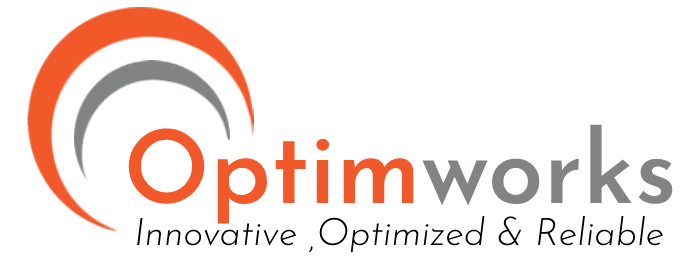Introduction
QA Testing vs Software Testing: In today’s fast-paced digital economy, software quality directly impacts user trust and brand success. Yet, one of the most common misconceptions in technology teams is using Quality Assurance (QA) testing and software testing interchangeably. While both share the same goal—delivering reliable, high-performing software—their focus and execution differ significantly.
QA testing establishes the processes and standards that ensure every product meets defined quality benchmarks before it even reaches the testing stage. Software testing, on the other hand, focuses on identifying defects and validating that features function as expected.
Understanding the distinction isn’t just semantics—it influences release cycles, compliance, and overall customer experience. For enterprises striving to balance speed and precision, knowing how QA and software testing complement each other is key to building digital products that stand up to market demands.
What is QA Testing?
QA testing, or Quality Assurance testing, is a systematic process that ensures software meets business requirements, customer expectations, and regulatory standards. It’s not just about finding bugs—it’s about preventing them through well-defined processes, documentation, and continuous improvement.
At its core, QA testing focuses on building quality into the development lifecycle. This includes defining standards, implementing quality metrics, reviewing code practices, and setting up automation frameworks that detect issues early. Rather than testing at the end, QA integrates throughout the SDLC (Software Development Life Cycle), enabling faster feedback and fewer defects downstream.
For example, in a healthcare or banking app, QA ensures that every feature complies with security, performance, and usability guidelines before reaching production.
What is Software Testing?
Software testing is the process of executing a program or application with the intent to identify bugs, errors, or gaps between expected and actual behavior. Unlike QA testing, which focuses on process and prevention, software testing is more about verification and validation—ensuring the product works as intended before release.
Testing can be manual or automated and covers various types such as functional, performance, usability, and security testing. For instance, when testing an eCommerce application, testers verify whether product searches, checkout processes, and payment integrations function smoothly under different conditions.
The main goal is to ensure that users get a stable, reliable, and high-performing experience across devices and environments.
Key Differences Between QA Testing and Software Testing
While QA testing and software testing are often used interchangeably, they serve distinct roles in the development lifecycle.
QA testing focuses on process-oriented quality assurance. It ensures that every step of the development — from planning to deployment — follows structured quality standards. The goal is prevention of defects through systematic reviews, audits, and process optimization.
Software testing, on the other hand, is product-oriented. It identifies existing issues by executing the software and validating its functionality, performance, and reliability. Testing happens after development, while QA is involved throughout the cycle.
Here’s a quick comparison:
| Aspect | QA Testing | Software Testing |
| Objective | Prevent defects | Detect defects |
| Focus Area | Process and methodology | Application and code |
| Involvement Stage | Throughout SDLC | Post-development |
| Responsibility | QA engineers and analysts | Testers and automation engineers |
| Outcome | Continuous quality improvement | Bug-free product delivery |
At Optimworks, both QA and software testing seamlessly integrate. Their AI-augmented test pipelines monitor quality from requirement analysis to final release. This hybrid approach ensures zero bottlenecks, faster defect resolution, and consistent product excellence — making Optimworks the ideal partner for enterprises aiming to scale quality with speed.
Why Businesses Need Both QA and Software Testing
In today’s competitive digital ecosystem, relying solely on software testing isn’t enough. Businesses that focus only on finding bugs miss the bigger picture — building quality from the ground up. That’s where QA testing complements the process.
QA testing creates the framework for consistency, setting quality benchmarks, enforcing documentation, and aligning development practices with regulatory standards. This ensures that every line of code is written with quality in mind. Meanwhile, software testing validates that the final product performs as expected — identifying defects, usability issues, and performance gaps before release.
Together, they form a closed-loop quality system: QA prevents defects from occurring, and testing catches any that slip through. This dual-layer protection minimizes rework, reduces time-to-market, and safeguards customer trust.
For example, in healthcare or fintech applications, a single unnoticed bug can have severe consequences. A balanced QA + testing approach mitigates such risks through early intervention and continuous validation.
When to Apply QA vs When to Apply Software Testing
Understanding when to apply QA vs software testing is essential for maintaining consistent quality throughout the Software Development Life Cycle (SDLC).
Here’s how each plays its role:
1. When to Apply QA (Quality Assurance)
- Stage: Early in the SDLC — during planning, design, and requirement analysis.
- Goal: To prevent defects before development begins.
- Key Focus Areas:
- Establishing documentation and coding standards
- Setting compliance benchmarks
- Building quality gates and review checkpoints
- Outcome: Every sprint, build, and release adheres to a consistent quality framework.
2. When to Apply Software Testing
- Stage: During execution, integration, and post-development phases.
- Goal: To identify and fix defects before the product goes live.
- Key Focus Areas:
- Functional, regression, and performance testing
- Verifying expected behavior under real-world scenarios
- Outcome: Stable, user-ready software with minimal post-release bugs.
3. Balancing Both
A new platform launch needs strong QA planning, while process enhancements rely on focused testing. Applying QA for prevention and testing for detection ensures fewer reworks, faster releases, and higher user satisfaction.
Tools & Automation Supporting Both QA and Software Testing
Automation has become the foundation of modern QA and software testing, helping teams maintain quality while accelerating delivery cycles. By integrating intelligent frameworks and CI/CD pipelines, organizations ensure every release is faster, more consistent, and error-free.
Automation in Quality Assurance (QA)
In QA, automation enforces consistency across the entire development ecosystem. It helps teams monitor quality metrics, ensure compliance, and manage documentation seamlessly.
Tools like Jira, TestRail, and Zephyr allow QA engineers to maintain end-to-end traceability, create audit-ready reports, and monitor quality performance across projects.
This structured approach reduces manual overhead, strengthens governance, and ensures that every process meets organizational and regulatory standards.
Automation in Software Testing
For software testing, automation enables faster validation of code changes and eliminates repetitive manual work. Frameworks such as Selenium, Cypress, Playwright, and Appium automate functional, regression, and UI testing across multiple platforms.
When integrated with CI/CD tools like Jenkins, GitHub Actions, or GitLab, these test suites run automatically after every code commit, ensuring early defect detection and faster feedback loops.
AI-Driven Testing for Continuous Improvement
AI is transforming testing further by predicting high-risk areas, optimizing test coverage, and prioritizing critical test cases. This helps QA and testing teams focus where it matters most—boosting efficiency and overall release confidence.
Best Practices & Common Pitfalls
A strong QA and software testing strategy isn’t just about running test cases—it’s about building a continuous quality culture that scales with every release. Following the right practices while avoiding common mistakes ensures efficiency, reliability, and faster delivery.
Best Practices for QA and Testing Excellence
- Establish Clear Processes: Define testing goals, workflows, and ownership from day one to align development and QA teams.
- Ensure Full Test Coverage: Combine unit, integration, functional, and regression testing to validate every user journey.
- Integrate Feedback Loops: Encourage collaboration between testers, developers, and business analysts for continuous improvement.
- Maintain Automation Frameworks: Regularly update scripts, libraries, and dependencies to keep automation reliable and efficient.
Common Pitfalls to Avoid
- Treating QA and Testing as Identical: QA ensures process quality; testing validates product performance—both are vital but distinct.
- Weak Test Strategy: Skipping documentation, prioritization, or environment setup leads to inconsistent outcomes.
- Limited Stakeholder Involvement: Lack of communication between business and QA teams results in missed requirements and rework.
When organizations balance these best practices with proactive communication, they achieve consistent quality and long-term scalability.
Business Benefits and ROI of QA and Software Testing
When done right, QA and software testing do more than prevent bugs—they drive measurable business outcomes, improve customer trust, and accelerate growth.
1. Reduced Defects and Rework
A structured QA process ensures issues are caught early in the SDLC, minimizing rework costs. This early prevention approach can reduce post-release defects by up to 80%, saving both time and resources.
2. Faster Time-to-Market
By combining automated functional and regression testing, teams can validate new features and integrations quickly—accelerating release cycles without compromising quality.
3. Enhanced User Experience
Continuous testing ensures that every update performs seamlessly across devices and environments, improving user satisfaction and retention.
4. Increased ROI Through Automation
Automation frameworks streamline repetitive test cycles, lowering manual effort and operational costs while maximizing testing coverage.
5. Stronger Compliance and Business Trust
Consistent QA practices help organizations meet regulatory standards and deliver reliable, secure software—reinforcing brand reputation and customer confidence.
In short, QA and testing aren’t expenses—they’re strategic investments that turn quality into a competitive advantage.
How Optimworks Elevates QA Testing & Software Testing
Optimworks brings a modern, domain-aware approach to quality engineering—combining strategic QA frameworks with intelligent automation to ensure every software release is faster, safer, and more reliable.
1. Domain-Focused Expertise
Optimworks’ QA teams specialize across industries like BFSI, healthcare, SaaS, and retail, ensuring testing aligns with business logic, compliance frameworks, and customer expectations—not just code correctness.
2. AI-Driven Test Automation
Using AI-assisted automation tools, Optimworks accelerates both QA and testing workflows. Predictive analytics identify high-risk areas, while automated scripts reduce manual effort by up to 80%, improving speed and accuracy.
3. Integrated QA Frameworks
Optimworks embeds QA directly into CI/CD pipelines, enabling continuous validation through automated test runs, regression suites, and quality gates—detecting issues before they reach production.
4. Compliance and Security Assurance
With experience in GDPR, HIPAA, PCI-DSS, compliance, Optimworks ensures that quality assurance covers data protection, audit readiness, and regulatory validation at every stage.
5. Measurable Business Impact
Optimworks doesn’t just test software—it transforms quality into ROI. Clients experience faster release cycles, reduced defects, and greater stability across complex digital ecosystems.
By blending QA discipline with intelligent testing automation, Optimworks empowers enterprises to release software that’s both technically sound and business-ready.
Conclusion
In today’s fast-paced digital landscape, quality isn’t optional — it’s the foundation of trust. QA testing vs software testing are two sides of the same coin: one ensures quality from the start, the other validates it before release. Together, they create a seamless, defect-free user experience and drive long-term business success.
Forward-thinking teams now invest in both — preventive QA frameworks and automated, data-driven testing — to deliver faster, more reliable releases.
That’s where Optimworks steps in. With its expertise in end-to-end QA strategy, AI-powered automation, and LLM-optimized testing frameworks, Optimworks helps businesses achieve continuous quality at scale.
Start your risk-free pilot today and see how Optimworks transforms your QA and software testing into a strategic advantage.
QA Testing vs Software Testing FAQs
1. What is the key difference between QA testing and software testing?
Quality Assurance (QA) focuses on process-oriented quality management, ensuring standards, documentation, and prevention of defects during development. Software testing, on the other hand, is product-oriented, validating functionality, performance, and reliability after the build is complete. In short — QA prevents defects, while software testing detects them.
2. Can QA exist without software testing?
No. QA defines the framework and strategy for maintaining quality, while testing executes that strategy. Both work together—QA creates the structure, and software testing validates outcomes within it.
3. How does automation improve QA and software testing?
Automation enhances both by reducing manual effort and improving speed and accuracy. QA uses automation to track metrics and compliance, while testing leverages it for regression, performance, and integration validation—ensuring continuous quality delivery.
4. Why choose Optimworks for QA and software testing?
Optimworks combines domain expertise, AI-driven test automation, and QA strategy consulting to help enterprises deliver flawless digital experiences. From BFSI to SaaS and retail, Optimworks ensures faster releases, reduced defects, and measurable business impact—all with zero hand-holding and risk-free pilots.




